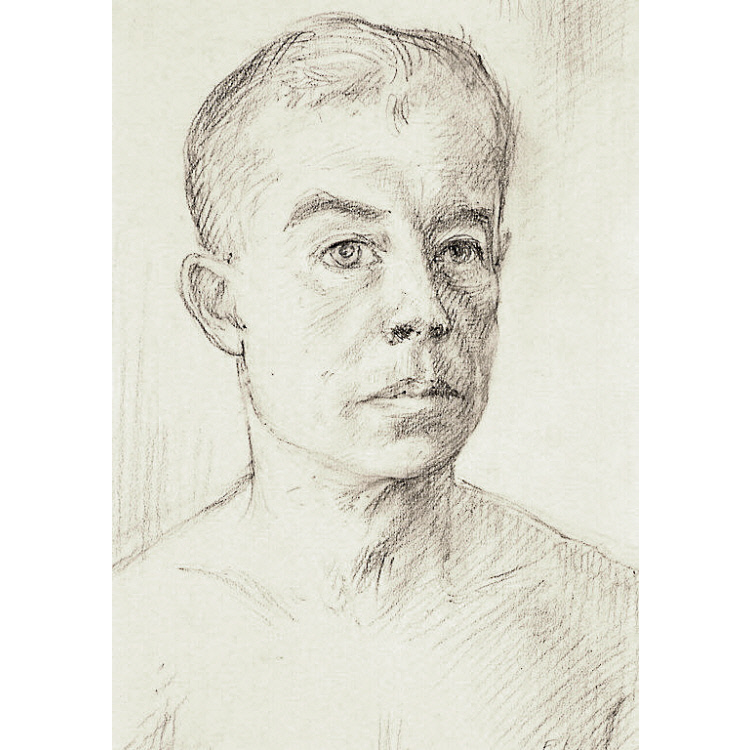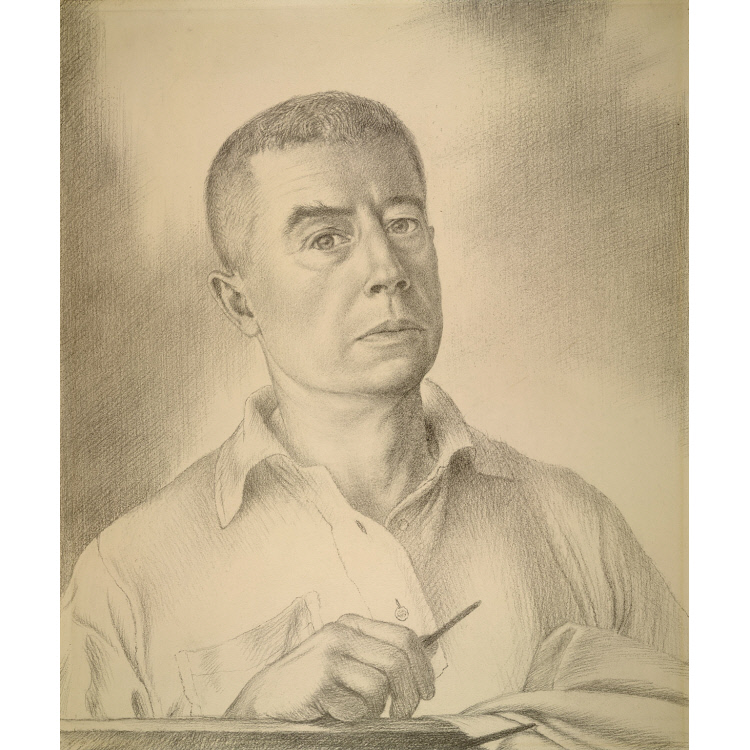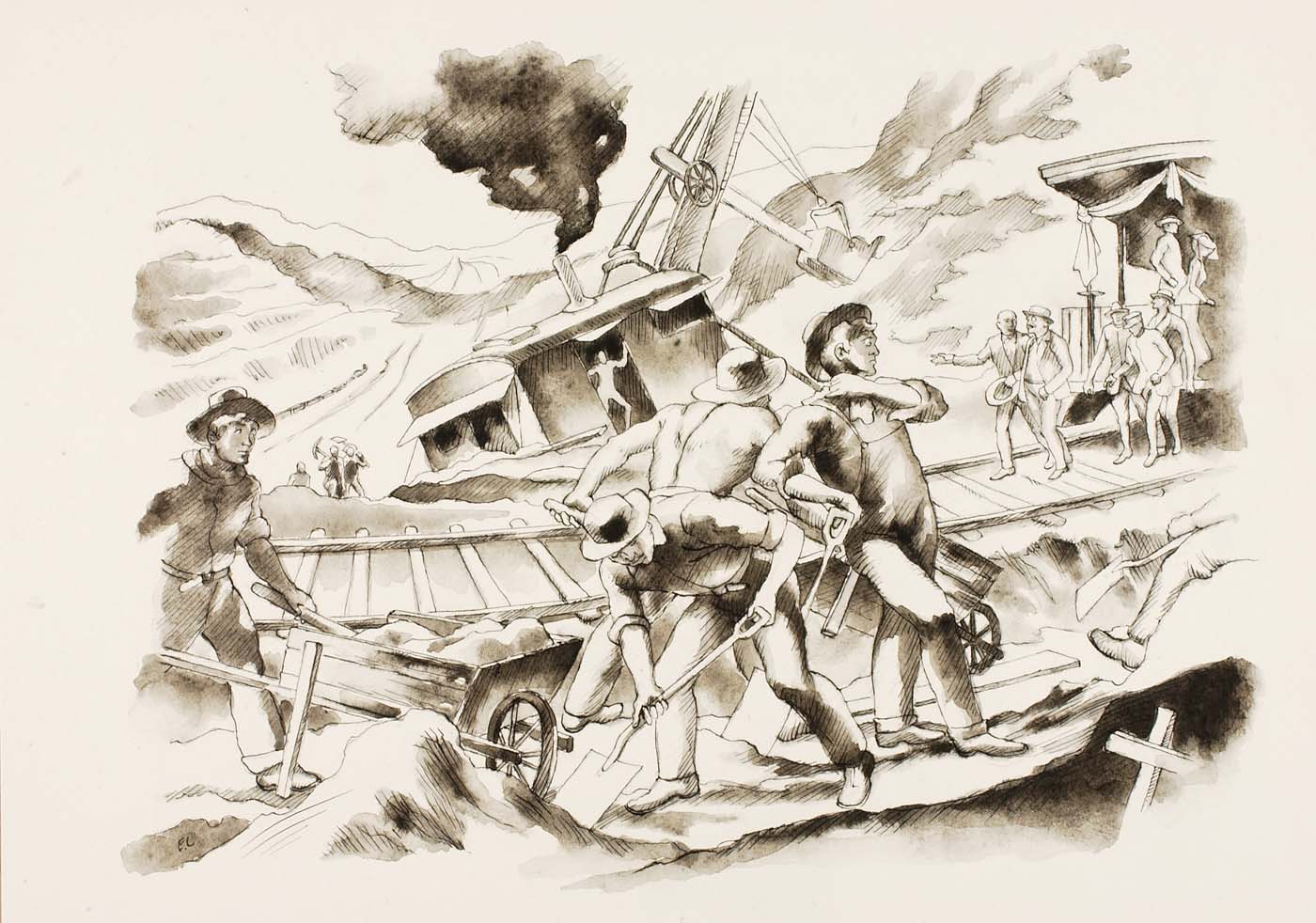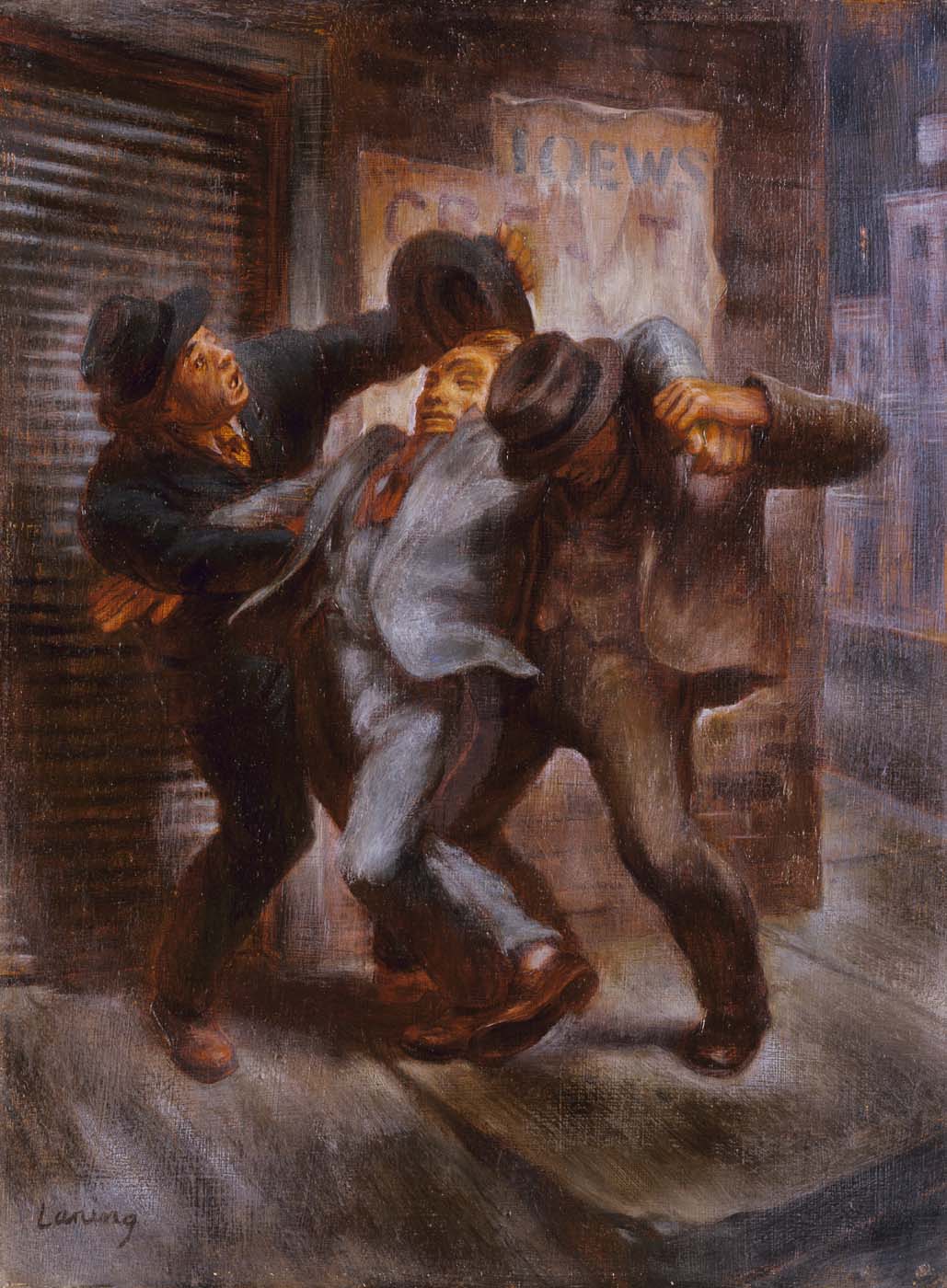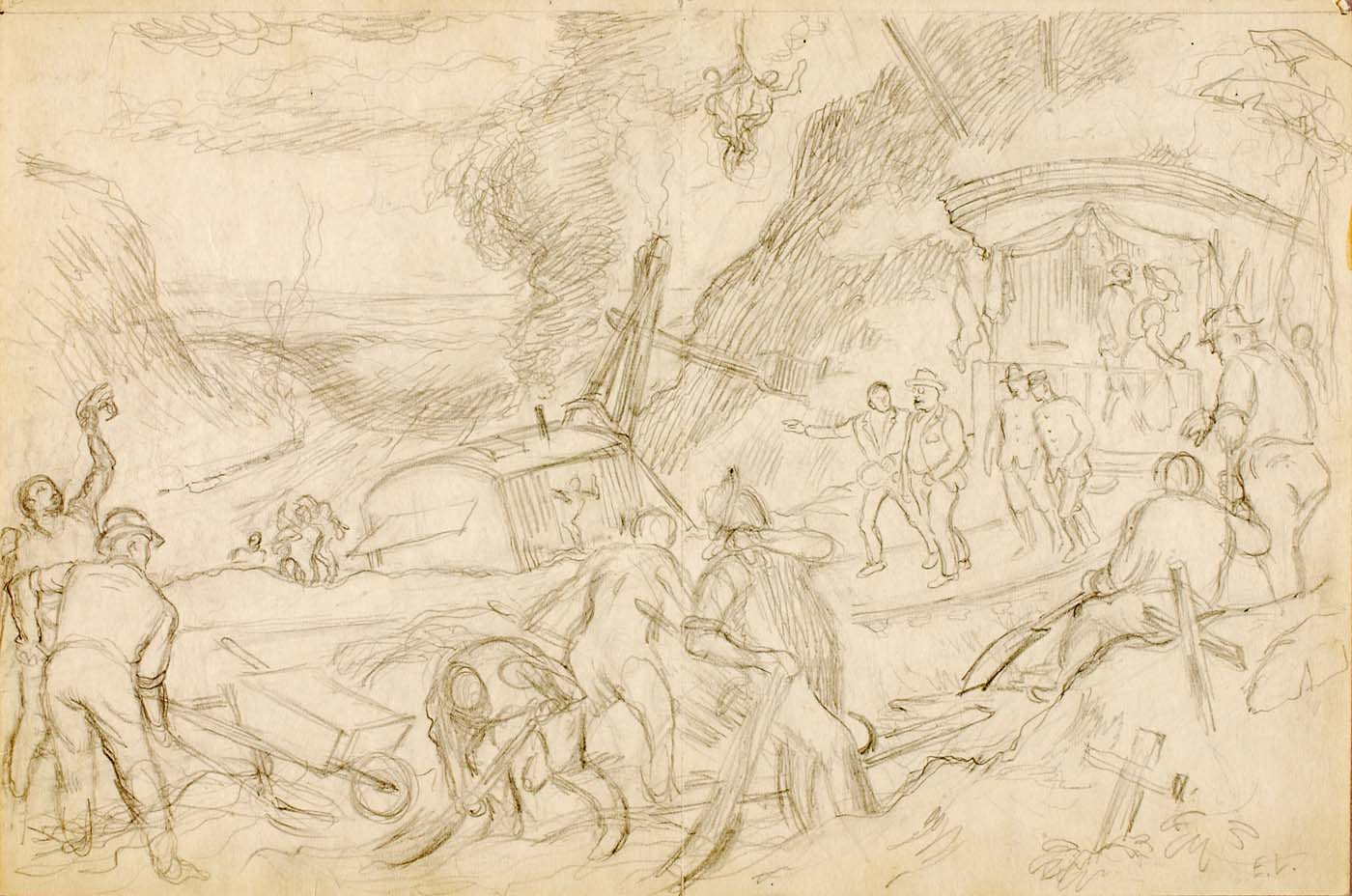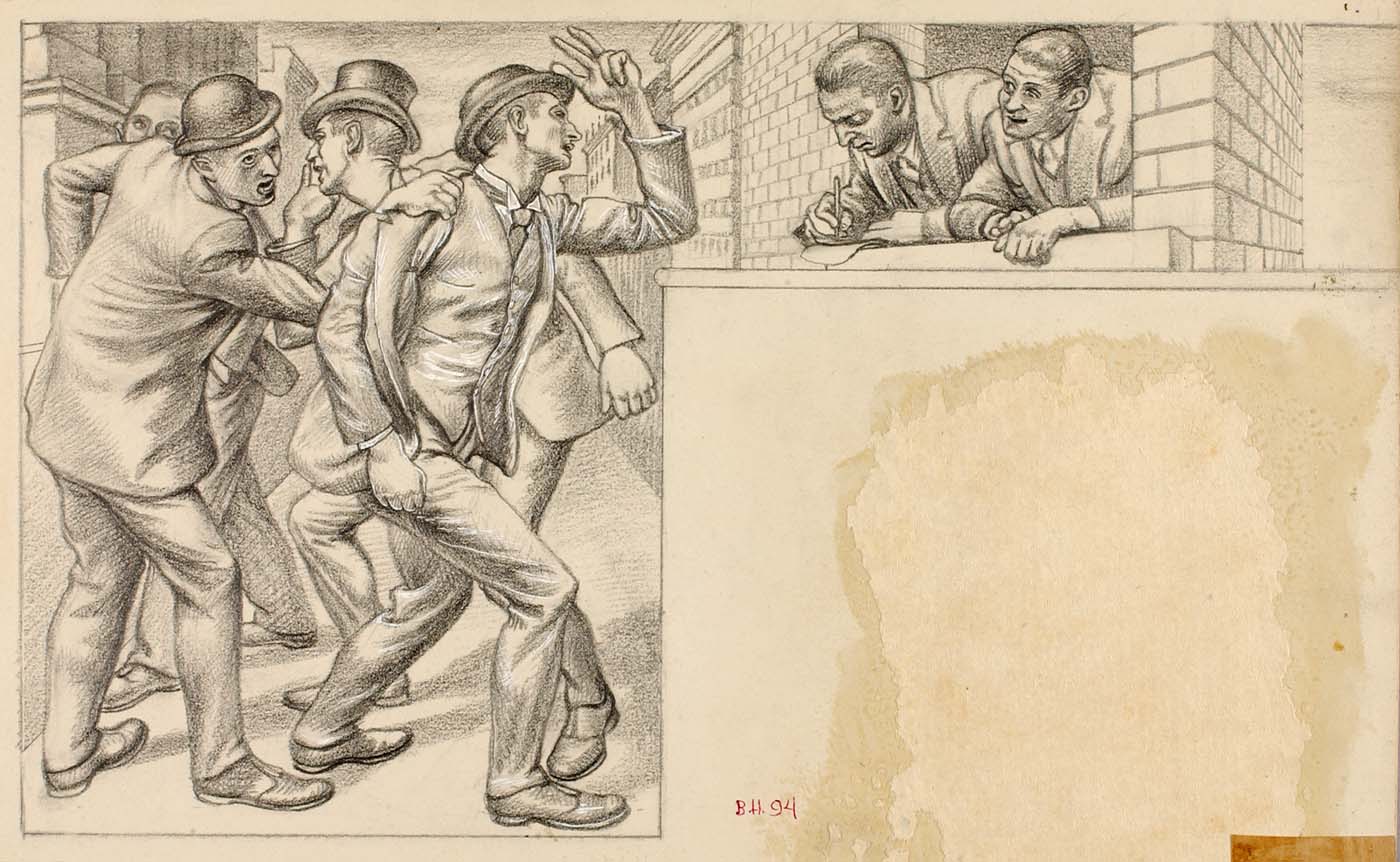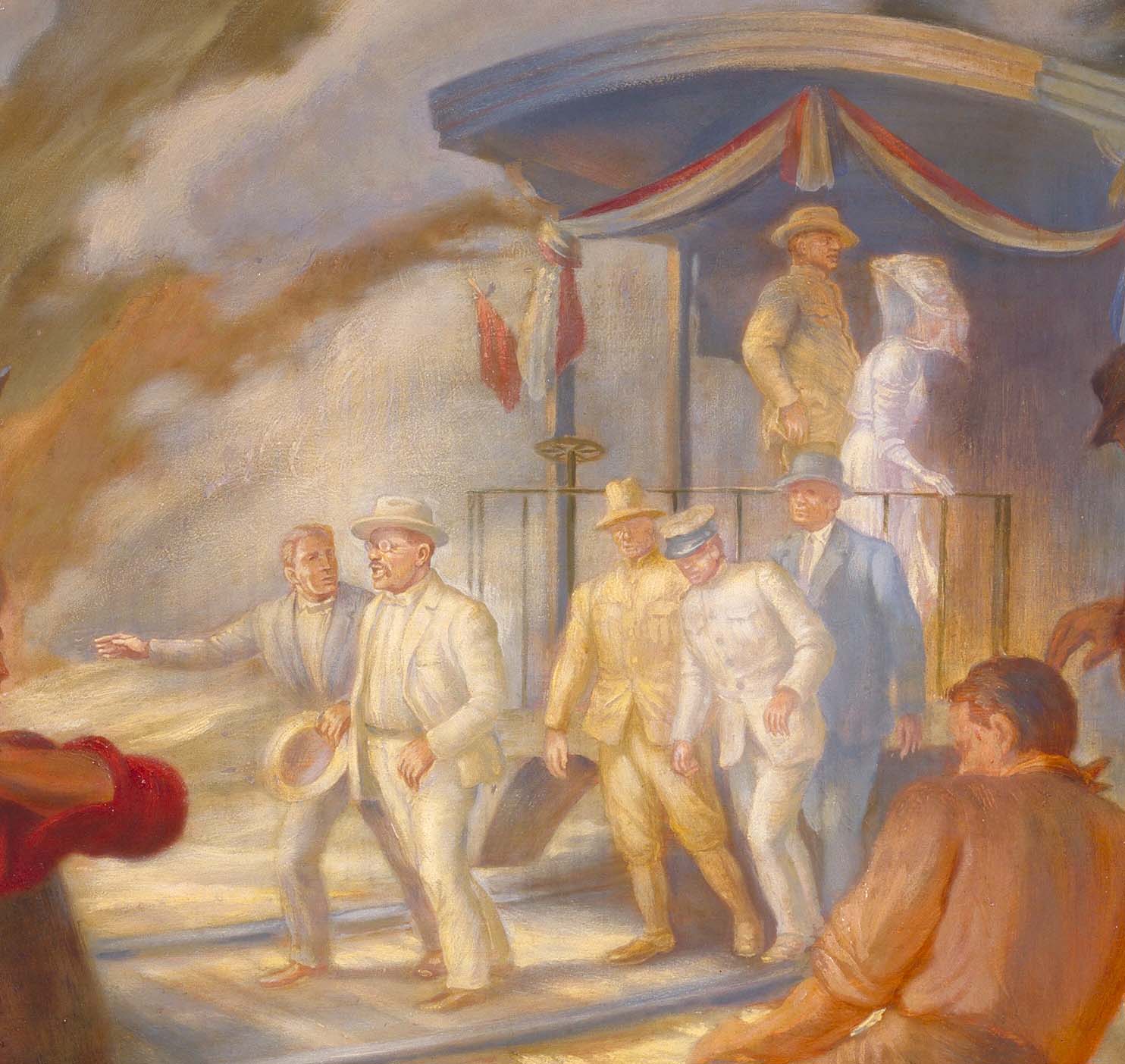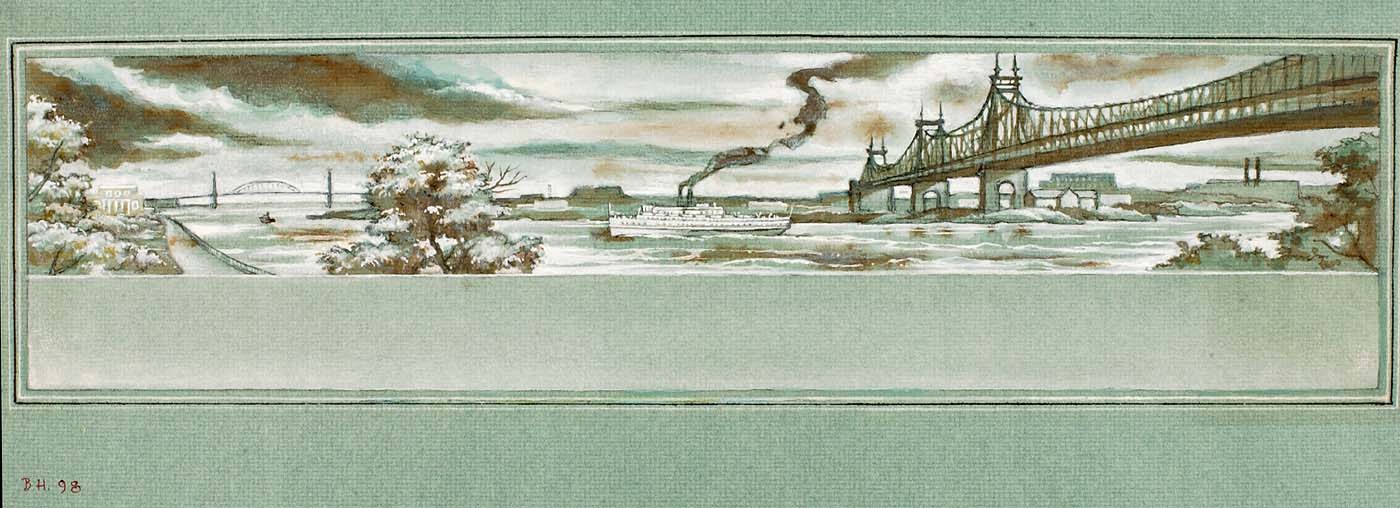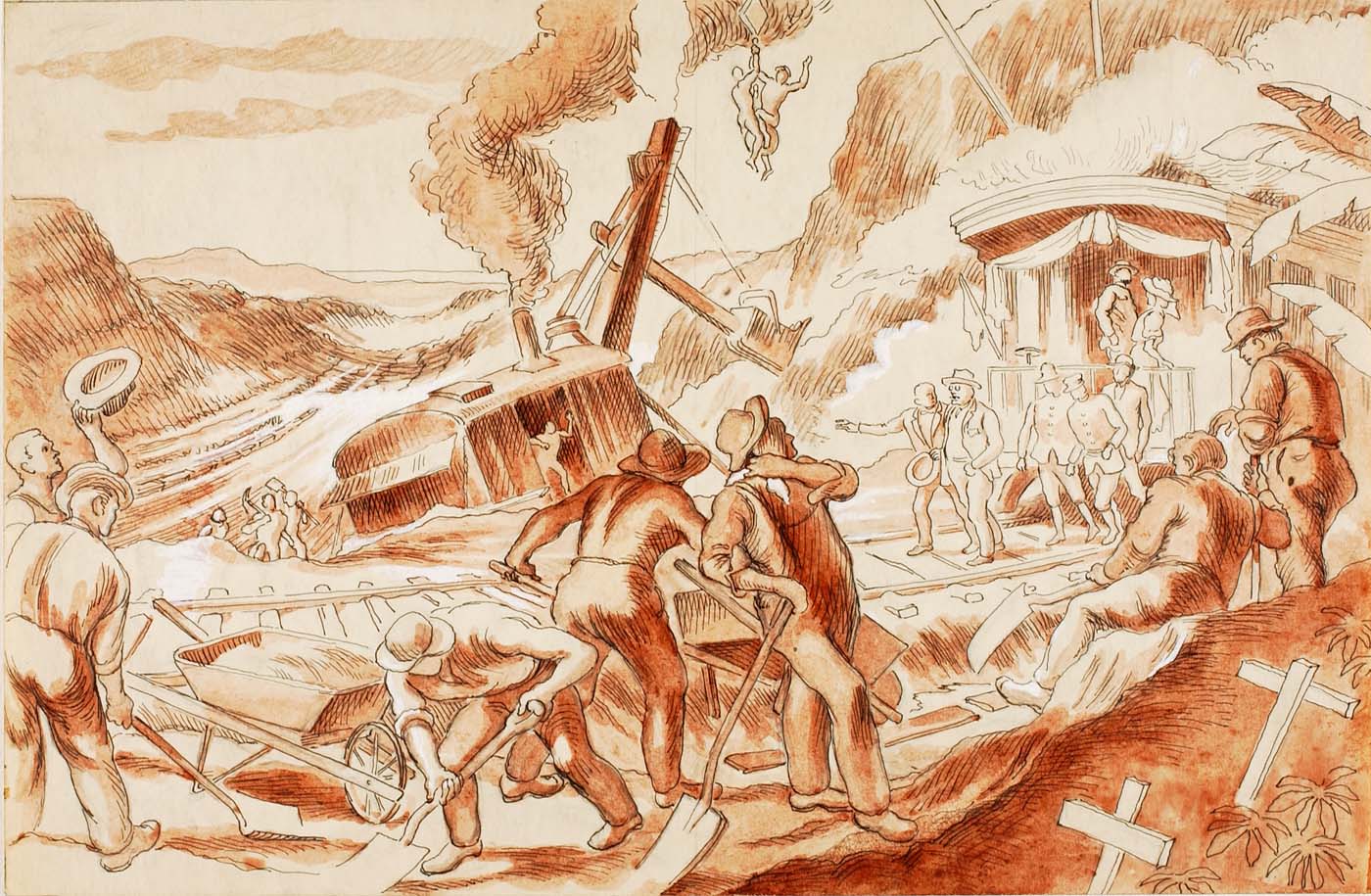Edward Laning
A native of Illinois, Edward Laning matured as an artist during the heyday of Regionalism and American Scene painting. Laning, whose grandfathers were both in populist politics, enjoyed a longtime friendship with Edgar Lee Masters, so it is no surprise that after an initial brush with modernism, he became a traditionalist with a bent for social satire. Studies in the late 19205 with Kenneth Hayes Miller, Reginald Marsh, and John Sloan at the Art Students League (where Laning himself taught from 1952 until 1975) confirmed this predilection. But it was Rubens's Descent from the Cross that inspired Laning's commitment to mural painting. During the 1930s, Laning's WPA commission to depict the role of immigrants in American industrial life for the immigration center at Ellis Island, along with his New York Public Library murals, brought him both renown and experience. Although Laning's easel paintings of the 1930s and 1940s, like the work of his friends Isabel Bishop and Reginald Marsh, reflected. his concern for social issues by depicting the working-class people around Union Square, his later paintings have a dreamlike quality not found in the earlier work.
Virginia M. Mecklenburg Modern American Realism: The Sara Roby Foundation Collection (Washington, D.C.: Smithsonian Institution Press for the National Museum of American Art, 1987)
Objects at Archives of American Art (1)

